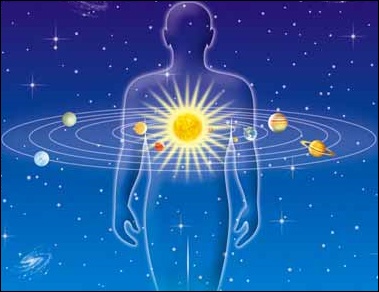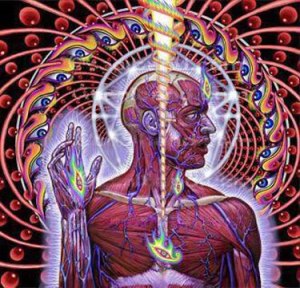SAGE KAPILA DISCOURSES ON SANKHYA
Sankhya and Yoga are twin disciplines that compliment each other. While Sankhya philosophy speaks of the Soul as Purush, its entrapment by matter (Prakriti) and its eventual release (Moksha) in the context of the human circumstances, Yoga concerns itself with the process by which such liberation can be achieved through disciplines, exercises and modes of meditation.
Sankhya philosophy is attributed to the pre-Vedic sage Kapila who stands apart from the galaxy of great Vedic thinkers. There are references to him however in the epic Mahabharata. Historians place him in the period before the sixth century B.C. The discipline and techniques of Yoga are to be found in the Yoga Sutras attributed to the sage Patanjali and the Yoga Bhasya of the legendary poet-sage of the Mahabharata, Veda Vyas.
The indigenous thought of India as represented by Jainism, Sankhya and Yoga bequeathed to Brahmanism which evolved in India following the Aryan advent, ideas about the Soul, Matter and reincarnation, which eventually became firmly embedded in Hindu philosophy as a fundamental premise.
The evolution of the concept of the Soul in Hindu philosophy can thus be traced from the Jain concept of the Jiva to the Sankhya concept of Purush and eventually to the Brahmanical concept of Atman. We saw in the post on Jain philosophy that Jain cosmology was dualistic, conceiving the universe as composed of Jiva the soul force and Ajiva or Cosmic Matter. The process through which Jainism portrays this has been termed as realistic and mechanistic. Both the Jiva and Matter were real not illusory. The Jiva suffered influx of Matter depending on Karmic actions performed. The ideal state of total release from Karmic consequence achieved by the path blazing Tirthankars, by ridding the Jiva of the polluting colours of Matter, led to salvation and liberation in a state of blissful isolation (Kevalam) at the apex of the universe. The components of the universe then were the Tirthankars with other liberated souls, the other Jivas still enmeshed and engulfed by matter and Matter.
In the Sankhya and Yogic view the Soul called the Purush, likewise experienced shrouding by matter, now explained as being composed of three attributes or Gunas – those of clarity (Sattva), passionate activity (Rajas) and inertia (Tamas). In its primal state, the Gunas of inertial matter were explained as being in a state of equilibrium and at rest. The presence of the Purush created a turbulance of excitement in inert nature on account of the brilliant radiance of these soul forces. Thus stimulated and attracted towards the Purushas, matter acted as iron filings would towards a magnet. Though Purush did not will such an outcome, nevertheless its proximity aroused a consciousness in inert matter in the form of subtle bodies and finally gross bodies which then enveloped the soul force in a material embrace. To use an analogy, the Purush could be compared to fire turning an iron molten. Sankhay does not regard the world as coming into being as a result of the act of a Creator. Creation takes place as a result of pre-existing matter being thus stimulated by the presence of Purush. Inert matter stimulated by the radiance and proximity of Purush transforms into a subtle body of Mind, Ego, Intellect and Sense Faculties and a corresponding gross body with sense organs.
In Sankhya philosophy the process of the creation of the subtle and gross bodies is developed and presented in immaculate detail in a theory of evolution. This later was adopted in entirety by Hinduism in its explanation of the Soul, Matter and transmigration, making it a major contribution of Sankhya to Hindu philosophy. Briefly, the theory goes thus: the stimulation of Purush’s radiance causes inert matter to acquire consciousness first in a subtle body through the creation of Mind (Buddhi) from which emerges the Ego (Ahankar) and onwards to the creation of faculties of action (Karmindriya), Intellect (Manas), Faculties of Sense (Gyanindriya), Subtle Counterparts of Sense Experience (Tan-Matra), the Subtle Atoms of the Subtle Body (Param-Anu) and finally a gross body (Sthula-Bhutani) through the interaction of gross elements. As this process of evolution from subtle to gross body takes place, there is a manifold increase in the Tamas Guna, the inert aspect of Prakriti which is responsible for holding together the created entity. In this regard Tamas can be compared to a gravitational force that binds its environment together. When the Yogi through meditation and exercise achieves enlightenment and liberation the Tamas Guna (the glue holding the physicality together) begins to erode and finally dissolves. What then remains is the Sattva Guna of clarity which in the absence of the other two Gunas facilitates authentic understanding, that ones true identity is not the ego personality but the indwelling Purush soul.
However, before such a liberation is reached if the gross body terminates in death, the surviving subtle body retaining the residual traces of many life times of desire, aspirations, potentials, habits, inclinations, patterns of behaviour etc as so many fragrances, odours and scars (Vasanas and Sanskars), determines the nature of a new existence and reincarnates. Reincarnations can continue from one life to another indefinitely. The Purush however remains untainted and pure as ever without attributes, qualities or movement – imperishable, inactive, impassive, indifferent and unaffected though its radiance continues to induce life and stimulate activities. When perfect knowledge of the Purush is gained by a seeker or Yogi, at the end of such a life not only the gross body perishes at death but the subtle body also dissolves with all its Sanskaras being eliminated and the Gunas of matter are released back to their inert equilibrium, the Purush resuming its isolation from matter as an independent entity. While in this state, in Jainism the Tirthankar though isolated is omniscient, in Sankhya the Purush abides in eternal unconsciousness as one would in the deep sleep state. The Purush in this state is not described as being blissful – it merely is itself. This portrayal of the Purush also contrasts with the Brahmanical concept of the liberated Atman as pure consciousness merging with Brahman, the super-consciousness.
According to Sankhya what obstructs liberation and helps to consolidate the subtle and gross bodies and their tendency to falsely identify with ego are the afflictions (Klesh). The afflictions consist of ignorance (Avidya), false impressions of ego, attachments, aversions, the wish that life goes on forever – in a word ones personality. Whereas Jain philosophy spoke of the soul being infiltrated by matter, Sankya’s emphasis (being psychological rather than material) is on ignorance (Avidya) as the main cause for soul’s entrapment. Here there is no actual influx of Karmic matter which needs to be resisted and repelled, rather there is the need for the Yogi to overcome his ignorance caused by the Gunas of action (Rajas) and inertia, slothfulness, dullness, and indiscretion (Tamas) and then with the remaining Guna of clarity (Sattva) to behold and discern the truth of ones reality. As the Gunas of action and inertia wash away the radiance of the Purush shines forth and the realization dawns that one is not the personality, that ones essence is the luminosity within which was hitherto shrouded by the body and its personality. Now finally one becomes aware of ones true identity. This is called the discrimination of insight (Vivek) which alone overcomes ignorance (Avidya) and frees one from the entrapment of the Gunas of Prakriti (Nature). The insight takes one to the state of isolation (Kaivalya) which truly reflects the state of the Purush (Soul).
The Dualistic and atheistic philosophies of Jainism and Sankya being pre-Aryan and indigenous, treat the soul forces as being plural and the field of nature as substantial rather than an illusion generated by Maya as in Vedanta Hinduism. Brahmanism on the other hand being Monist and non-dualistic emphasizes that there is only one essence Brahman which creates a mirage of numerous souls that regard themselves as individuals when there is nothing other than Brahman though each soul entity experiences that Brahman as its Self. The mechanistic and materialistic approach of Jain Philosophy and the psychological approach of Sankhya thought was superseded by the deeply metaphysical and spiritual interpretation of Brahmanism in a grand synthesis in contemporary Hindu thoughts and beliefs.






